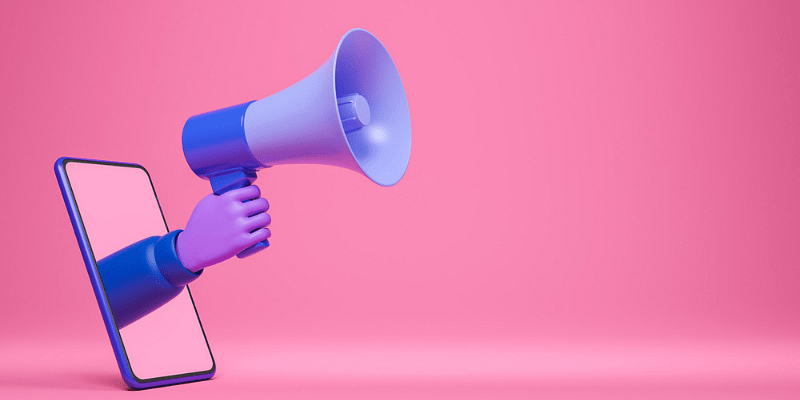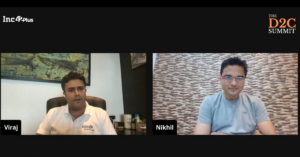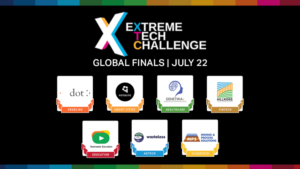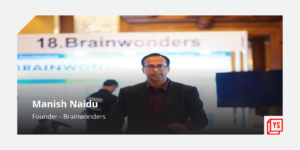It’s been over a year since Covid-19 was declared a pandemic, and the world witnessed a complete lockdown for the first-time ever. While face masks and social distancing became the new-normal, the pandemic has triggered some drastic changes in consumer behaviour in almost every sector.
Now, video calls have replaced conference rooms, water cooler conversations happen on Airmeet social lounge, HR relies on Netflix party for a fun Friday evening, and cash counters are being replaced by gateway payment mode.
Agility became crucial for businesses to survive owing to the frequently changing regulations and societal scenario. Some companies like AirBnB were in the red zone, while some like Zoom saw an unprecedented growth due to the nature of their service. And then, there were also companies like Clubhouse that created opportunities even during such trying times.
In order to adapt to the new consumer behaviour, businesses have made major changes in the way they operate, sell, and market.
Consumers have switched to digital modes of communication and digital payment transactions, thus making it necessary for local kiranawallas to adopt novel ways of trading. Kiranas now have WhatsApp business accounts, they are switching to ecommerce, and also have QR codes outside their shop to facilitate cash-free transactions.
Besides the regular operations and logistics of a company, change in external and internal environment saw a drastic shift in the advertising and marketing landscape too. The marketing and advertising approach of a company plays a crucial role in sustaining and elevating the growth of a company.
Due to the lack of resources and situational limitations of traditional means of advertising and promotion through billboards, newspapers, and pamphlet distribution at stalls, companies were forced to adopt digital ways of advertising and marketing post this pandemic.
The pandemic has definitely altered consumer behaviour to a great extent and has fast-tracked the era of digitisation. Post-pandemic has thus led to a shift in the marketing and advertising landscape in these three ways:
The next wave of marketing – Creativity, digital, data, and technology
Modern day marketers have to figure out the perfect blend of creativity and technology and back it with data. Due to inadequate resources offline, a marketing mix in today’s world is incomplete without social media being its cornerstone.
Social media challenges and trends like the bingo were highly leveraged by brands to establish new customers on social media and engage with the current customers.
Even small and medium businesses that work with limited resources can have excellent ROIs if they use tech and social media optimally.
The world-wide lockdown also gave rise to ‘vocal for local’ to achieve the goal of self-reliant India sooner than expected. During this period, when people were experiencing financial crunch, Instagram enabled home-grown businesses to reach a wide audience at no-marketing cost, by simply adding the ‘vocal for local’ tag.
With advanced technology, people could also experience new places through virtual tours of various destinations like Portugal, Faroe Islands, etc. This not only created a brand-recall for consumers but also made them the potential tourists once the pandemic normalises traveling.
It is finally time for voice
From “order an uber” to “Alexa, what is the recipe for Dalgona Coffee”, voice has surged leaps and bounds in everyday searches.
One of the biggest shifts seen in consumer behaviour was for content consumption. Over the years, audience has moved from Doordarshan to Tata Sky set top boxes to Netflix and chill, and today, it’s the invite-only Clubhouse.
Audio-only content increased significantly during the lockdown as people wanted to consume engaging content while doing their other tasks. This also included radio, a content form often associated with commute only.
Podcasts have become an essential form of content for everything — ranging from news and interviews to speeches. People have found a virtual assistant in Siri and Alexa, and this is forcing brands to work on voice search-led SEO strategies.
Clubhouse has further disrupted this space with live social audio. It has opened an entirely new avenue for marketers, wherein they get the best of both worlds – direct and live engagement with consumers and audio-only platform.
For instance, brands can make their social group on the clubhouse app and promote their own products or services by enticing consumers to share their opinions on a related topic. This provides brands with a lot of first-hand insights on consumers’ perception of the brand.
Leading with purpose
Owing to the pandemic, businesses have started caring about stakeholder experiences over making profits. Now, it has become essential for brands to be socially sensitive, empathetic, and considerate with their tone and mode of communication – be it internally or externally. The pandemic has made brands and companies more conscious towards their actions and are altering their advertising and marketing approach.
Brands were even seen modifying their logo and taglines to spread awareness about the pandemic.
KFC dropped its well-known tagline ‘finger licking good’ keeping in mind the situation, multiple brands like Subway and Audi gave their logos a witty spin to convey the messages of social distancing and masking up, Coca Cola Philippines paused it’s marketing and advertising activities and donated the budget to support Covid-19 relief.
Post-pandemic, instead of initiating consumer-centric events and promoting their products or services, brands were seen to be socially responsible and help people through various means.
This was the first-time ever when multiple brands were seen to genuinely care about giving it back to their stakeholders — be it by donations, awareness campaigns, vaccinations camps or simply by being considerate about the situation instead of only safeguarding their image.
Amazon India has stepped up to contribute over 10,000 oxygen concentrators and 500 BiPAP machines to pre-identified hospitals and institutions across India. Zomato now provides ‘for a Covid patient’ order option to ensure it reaches the patient at the earliest. Even the influencers paused brand collaborations and used their social audience to amplify the reach of the necessary information.
Businesses are still learning to adapt to change, think ahead of the curve, and capitalise on opportunities but with conscious thought and action. While the pandemic has turned things upside down, marketing and advertising has taken an interesting turn and brought upon the marketers an interesting challenge with a great learning experience.
(Disclaimer: The views and opinions expressed in this article are those of the author and do not necessarily reflect the views of YS.)










![Read more about the article [Funding alert] Medpho raises $1M from Cygnus Medicare Group, others](https://blog.digitalsevaa.com/wp-content/uploads/2021/09/Image6jqc-1631535200750-300x150.jpg)